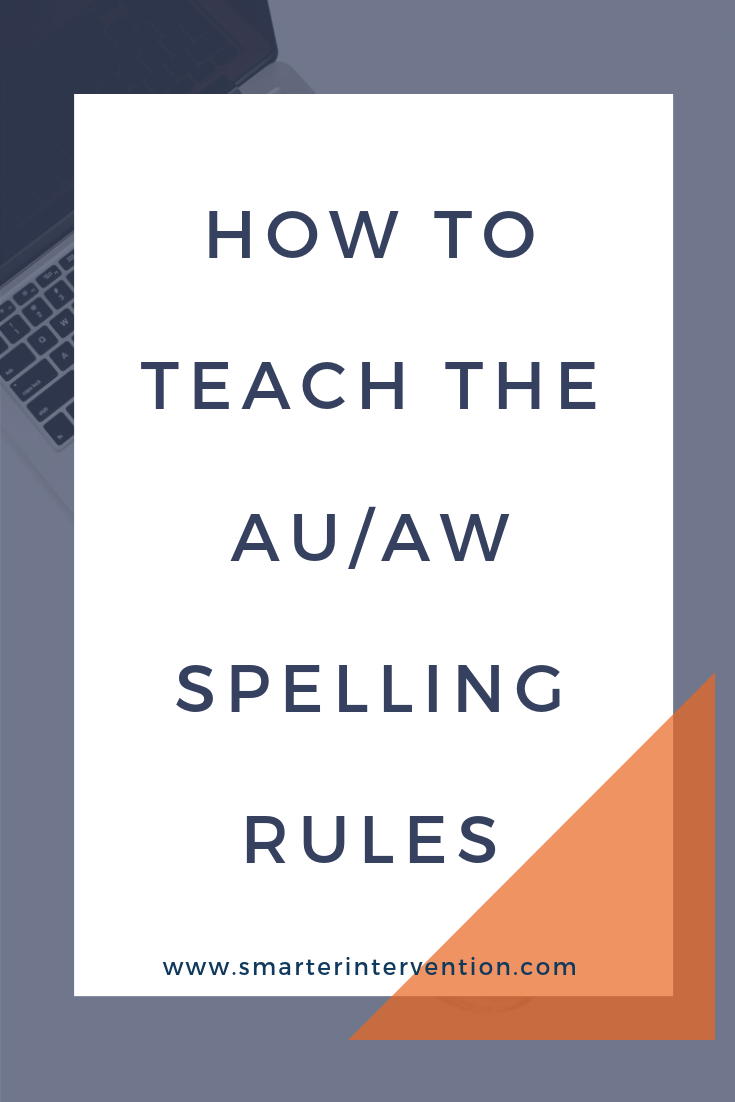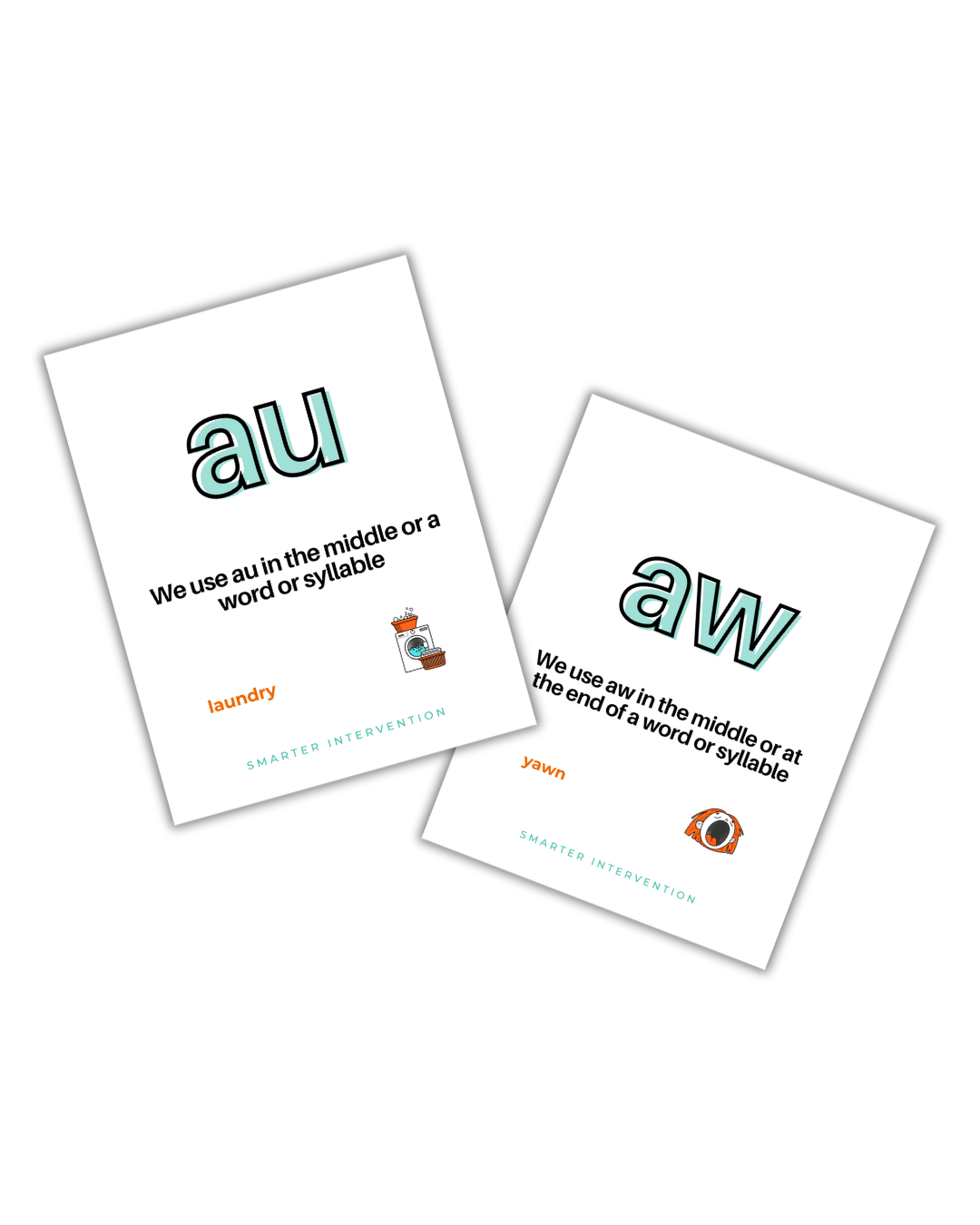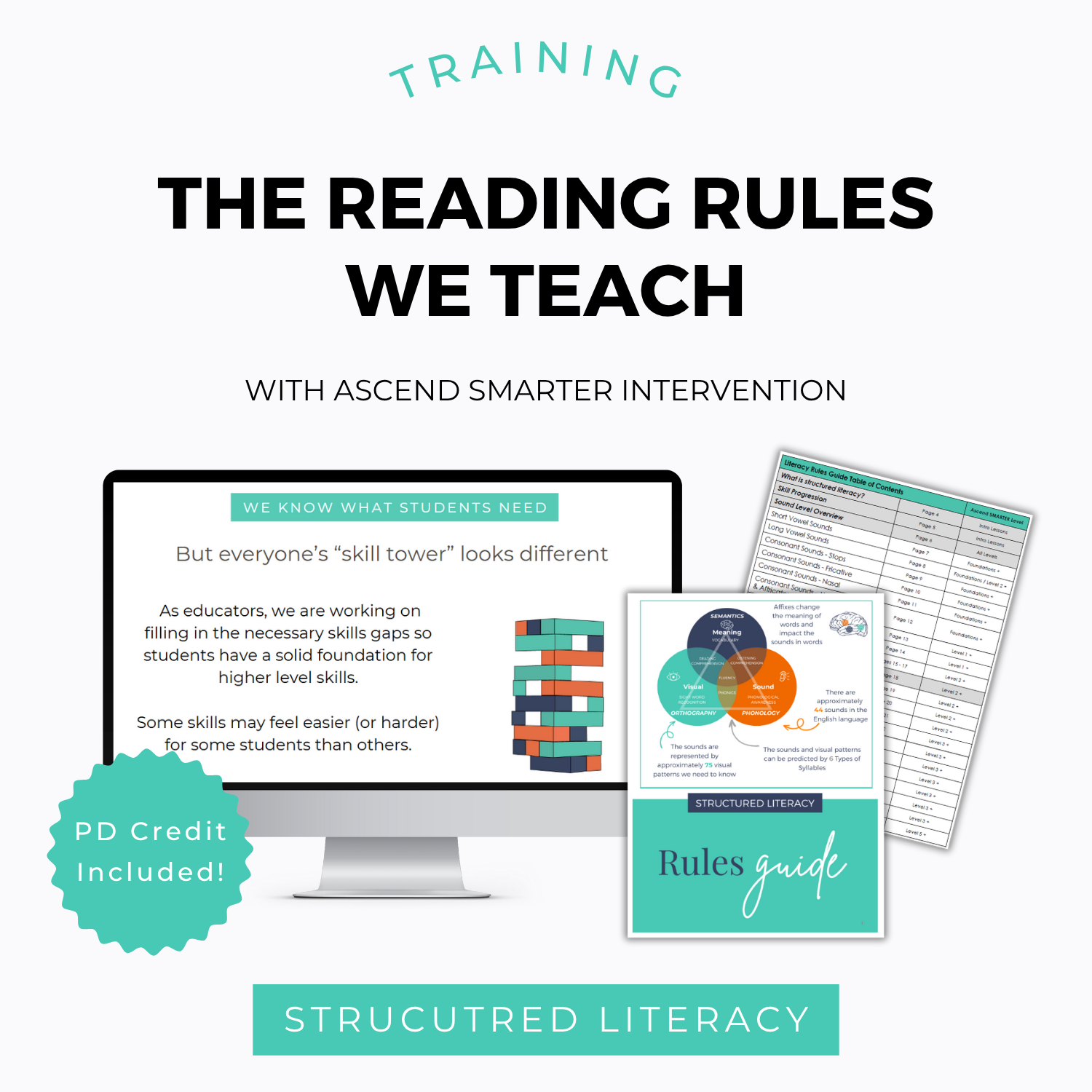How to Teach the au/aw Spelling Rule
Why It Matters
The English language loves its exceptions, but that doesn’t mean teaching spelling has to be confusing. The au/aw vowel team is a small but mighty pattern that reliably represents the short /o/ sound. Teaching students how and when to use au or aw takes spelling from guesswork to confidence.
What Is the au/aw Rule?
AU and AW are vowel digraphs—they work together to make a single short /o/ sound, like in audit or awkward.
AU appears in the middle of a word or syllable
AW shows up in the middle or at the end of a word or syllable
To help anchor this rule, we use the key phrase “Yawn, I have to do the laundry” 🥱👕. This visual and verbal hook connects au with laundry and aw with yawn, making the pattern stick.
How We Teach the au/aw Spelling Pattern
We follow a structured progression that starts with sound and moves through syllable, word, sentence, and beyond:
1. Teach the Sound in Isolation
Introduce the /o/ sound and have students write A‑U and A‑W while saying it aloud (“A, U says /o/” and “A, W says /o/”). Combine this with multisensory practice (say, trace, visualize) to deepen memory.
2. Connect to Syllable Structure & Spelling Options
Explain that au and aw act as single vowel sounds. Emphasize positional tendencies:
AU is most common in the middle
AW is possible in the middle or at the end
Also note the frequency bias: au appears about 66% of the time, making it a helpful fallback when uncertain.
3. Practice at the Word Level (with Vocabulary & Visual Anchors)
Begin with decoding and encoding simple words:
Middle-only examples (AU): sausage, haul, launch
Middle or end (AW): dawdle, paw, lawn
Use the “Yawn… laundry” 🥱👕 visual to reinforce the pattern contextually.
4. Practice at the Sentence Level
Invite creative, structured sentence writing:
Sentence building: “The author yawned during the launch party.”
Dictation: “I saw the small paw print on the clean laundry.”
Sentence combining using both patterns to build fluency and context.
This helps lock in spelling through meaningful use.
5. Extend to Paragraph Writing
Encourage students to write a short paragraph using au/aw words. Maybe a mini story about the chore escape, “laundry,” or sleepy mornings full of yawns. This pushes application and reveals where reinforcement is needed.
When Students Get Stuck
Common hiccups include:
Swapping au and aw, especially in the middle of words
Overgeneralizing one variant over the other
To help:
Lean on your “Yawn… laundry” 🥱👕anchor. It's simple, visual, and memorable.
Use writing + saying + visual association (multisensory).
Rely on frequency as a decodable clue.
Encourage trial of both forms when unsure; writing out daun vs. dawn often helps students self-identify the correct form.
Looking to teach au & aw in your lessons?
Depending on where you are in your teaching journey, here are a few next steps:
Just getting started?
Grab our Free Phonics Rules Posters! They’re perfect for hanging in your classroom or using as a quick reference when introducing a new pattern (not only will you get the au & aw patterns, but tons of other patterns we teach too!).
Download Phonics Rules Posters » Get them here!
Want to see how we teach all the rules?
Check out our Spotlight PD: The Reading Rules We Teach (and Why They Matter!)
This 1-hour on-demand training provides you with everything you need to help you confidently teach the rules that actually move the needle, without getting lost in all the complexity.
You’ll get a clear, research-backed framework that shows which reading rules to focus on, why they matter for the brain, and how to teach them at each level—sound, syllable, word, sentence, paragraph, and passage.





